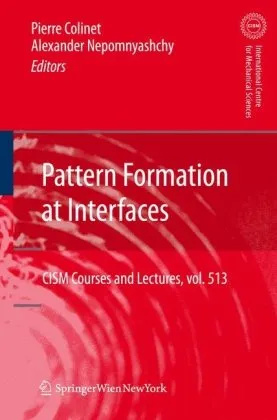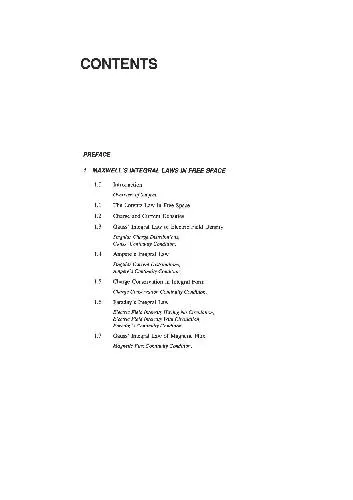Pattern Formation at Interfaces (CISM International Centre for Mechanical Sciences)
4.0
Reviews from our users

You Can Ask your questions from this book's AI after Login
Each download or ask from book AI costs 2 points. To earn more free points, please visit the Points Guide Page and complete some valuable actions.Related Refrences:
Introduction
Welcome to Pattern Formation at Interfaces, part of the esteemed CISM International Centre for Mechanical Sciences series, authored by Pierre Colinet and Alexander Nepomnyashchy. This book delves into the fascinating world of interface phenomena where science and engineering converge to unravel complex patterns formed under dynamic processes. It offers a rigorous exploration into the key physical mechanisms, mathematical frameworks, and experimental studies that contribute to our understanding of pattern formation at interfaces. With its interdisciplinary approach, this book serves as a valuable resource for researchers, engineers, and academicians.
The study of interfaces is critical in many scientific and industrial applications. From the intricate interplay of liquid films to the emergence of wave structures in multilayer systems, the behaviors at these interfaces often define the functionality and efficiency of advanced technologies. This book not only elucidates the fundamental concepts but also provides comprehensive analyses that reflect both theoretical and empirical insights into this field.
Detailed Summary of the Book
Pattern Formation at Interfaces is a comprehensive exploration of phenomena occurring at material interfaces. It begins by addressing the fundamental principles of interface mechanics, including instabilities caused by thermal, mechanical, and chemical stimuli. The authors carefully introduce the mathematical tools needed, focusing on nonlinear system dynamics, stability analysis, and numerical modeling techniques that underpin the patterns observed at interfaces.
The book is divided into several sections, each targeting a specific type of interface phenomenon. Topics include Marangoni effects, thin liquid films, pattern formation in multilayer systems, as well as experimental methods for examining interfaces. By combining theory, mathematical modeling, and experimental results, the authors create a holistic framework that demonstrates the physical significance of these patterns.
The final chapters delve into applications of interface studies in fields such as materials science, bioengineering, and nanotechnology. This practical approach highlights the book's relevance to solving real-world problems, making it a bridge between theoretical knowledge and industrial applications.
Key Takeaways
- Deep understanding of physical principles governing interfaces and instabilities.
- Mathematical modeling techniques, including nonlinear system dynamics and PDEs.
- Detailed exploration of experimental approaches to study interfaces and validate theories.
- Comprehensive coverage of applications in modern technologies, from bioengineering to nanomaterials.
- Interdisciplinary approach bridging physics, chemistry, and engineering.
Readers will come away with the ability to analyze interface phenomena critically, applying both theoretical models and experimental techniques to a diverse range of problems encountered in academic and industrial settings.
Famous Quotes from the Book
"The behavior of an interface is often governed not by the individual materials it separates, but by the dynamic interactions that transcend their boundaries."
"Patterns are the fingerprints of physics manifesting its elegance at every interface."
Why This Book Matters
Pattern Formation at Interfaces stands as a cornerstone of scientific literature in the study of material interfaces. Its interdisciplinary scope bridges numerous fields—from physics and mechanical sciences to biology and engineering—making it an invaluable resource for exploring the complex interactions that govern material behaviors. Whether you're a seasoned researcher or an aspiring student, this book will enrich your understanding of interfaces and empower you to apply this knowledge to diverse scientific and technological challenges.
Furthermore, the book’s methodology—effectively balancing theoretical analysis, mathematical rigor, and experimental validation—offers readers a unique perspective that is both deep and practical. It addresses questions that lie at the heart of understanding natural and industrial processes, creating a foundation for innovation across multiple domains.
Conclusion
Pattern Formation at Interfaces is a definitive guide to the study of dynamic phenomena at material interfaces. With its interdisciplinary focus, robust theoretical foundation, and emphasis on real-world applications, the book provides essential knowledge to researchers, engineers, and students alike. It is a testament to the beauty of physics and mathematics as they interact with complex systems, and it will inspire readers to delve deeper into the science of interfaces.
Free Direct Download
You Can Download this book after Login
Accessing books through legal platforms and public libraries not only supports the rights of authors and publishers but also contributes to the sustainability of reading culture. Before downloading, please take a moment to consider these options.
Find this book on other platforms:
WorldCat helps you find books in libraries worldwide.
See ratings, reviews, and discussions on Goodreads.
Find and buy rare or used books on AbeBooks.
1260
بازدید4.0
امتیاز0
نظر98%
رضایتReviews:
4.0
Based on 0 users review
Questions & Answers
Ask questions about this book or help others by answering
No questions yet. Be the first to ask!












![Electricity and Magnetism. Chapters from Concepts of Physics [Chapters 31-41]](https://s3.refhub.ir/images/thumb/Electricity_and_Magnetism__Chapters_from_Conc_43012.webp)
